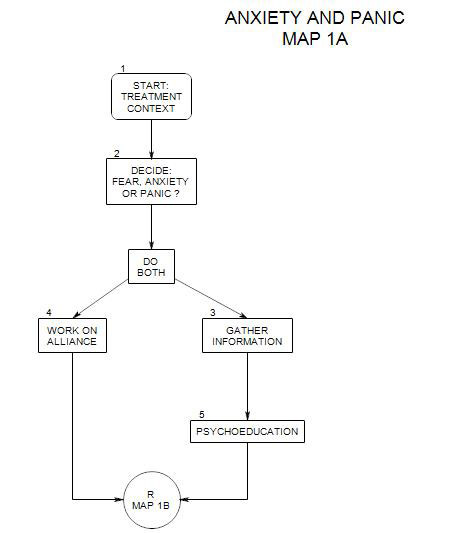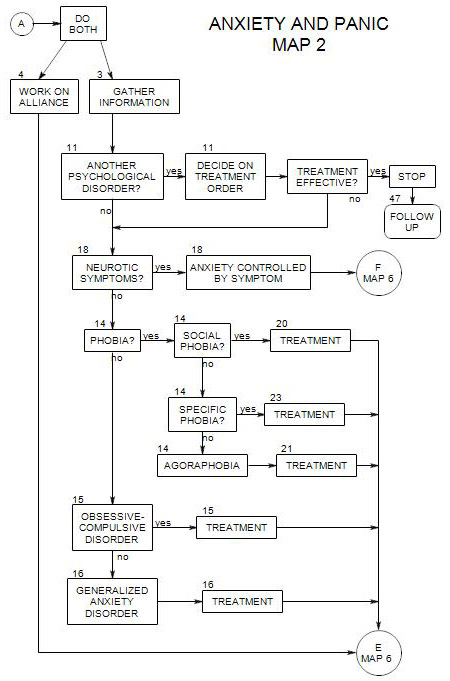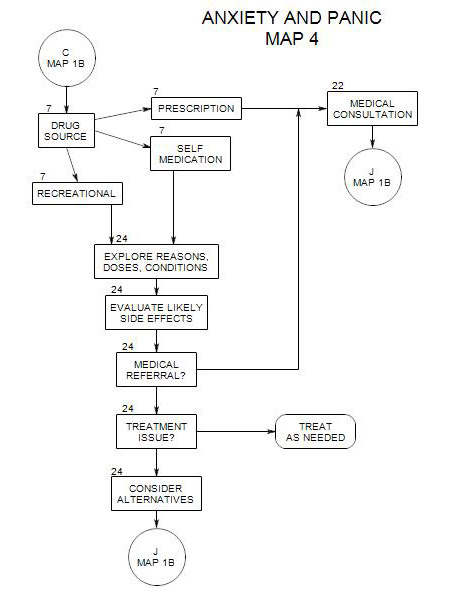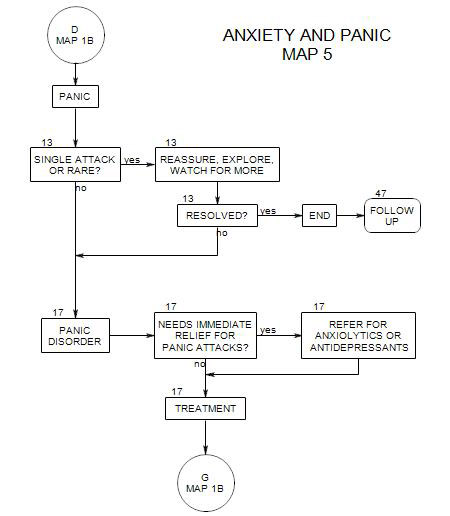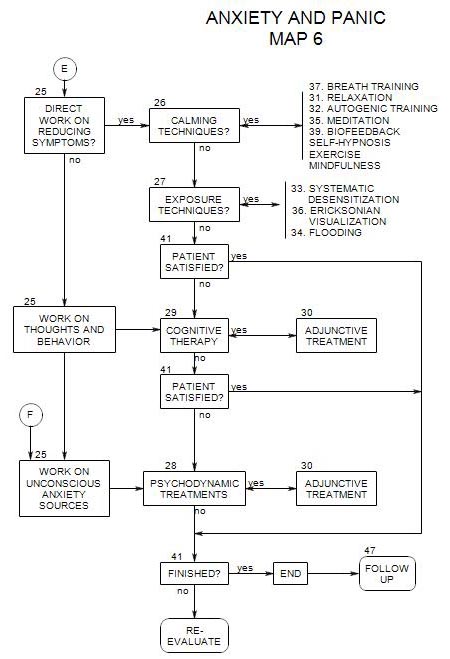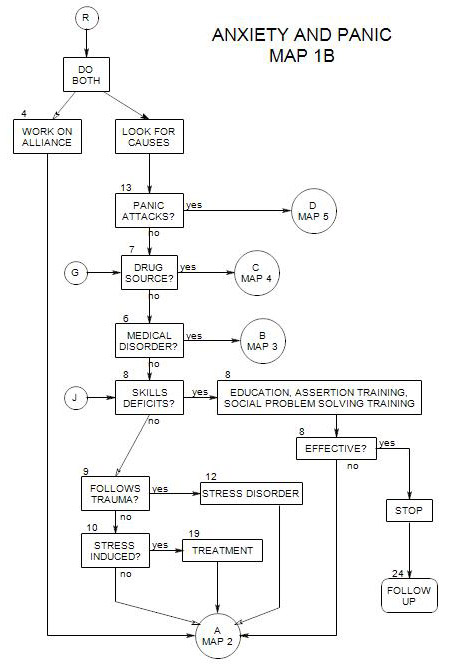
SECTIONS: 4 | 6 | 7 | 8 | 9 | 10 | 12 | 13 | 19 | 24
- Follows Section 6 on Map 1B
When a person is anxious because of a realistic assessment that he/she is unable to deal effectively with the situations he/she is facing, treating the anxiety is not an effective place to begin.
In such cases, you need to decide whether to treat the person’s anxiety directly or reduce it indirectly by helping him/her fit more effectively into his/her environment.
If his/her work skills are inadequate, further education or training may be required, or the person may need to find work that makes use of skills he/she already has.
If his/her social skills are ineffective, then social skills training may be called for.
A person may not know how to express his/her needs in a direct and effective way, either socially or at work. This can lead to increased anxiety, as needs go unmet and the person feels inadequate in major arenas of life. Assertion training can be a part of treatment, or the person can be sent to a consultant or class for special training.
Continuing or Terminating
For some patients, addressing the person’s skill deficits may be sufficient to reduce anxiety to the point of moving on. A major treatment for any anxiety is exposure, and a person with increased skills and hope for improvement in his/her life may be able to engage in it more fully and productively. This may be enough to begin a positive spiral in which anxiety is naturally reduced without further psychotherapy. In that case, it may pay to terminate treatment, at least for the present, while the person consolidates a new perspective, and consider a re-evaluation at a point several weeks or months in the future.
Other patients may need continual encouragement in order to keep using new skills and perspectives. Old habits tend to persist, and a function of therapy may be to identify them and deal with them as they occur.
Some patients may have difficulty learning or applying new skills and need therapy to make use of additional training. Or attempts to use new skills may lead to recognition of other underlying issues that need to be addressed, either cognitively or psychodynamically.
